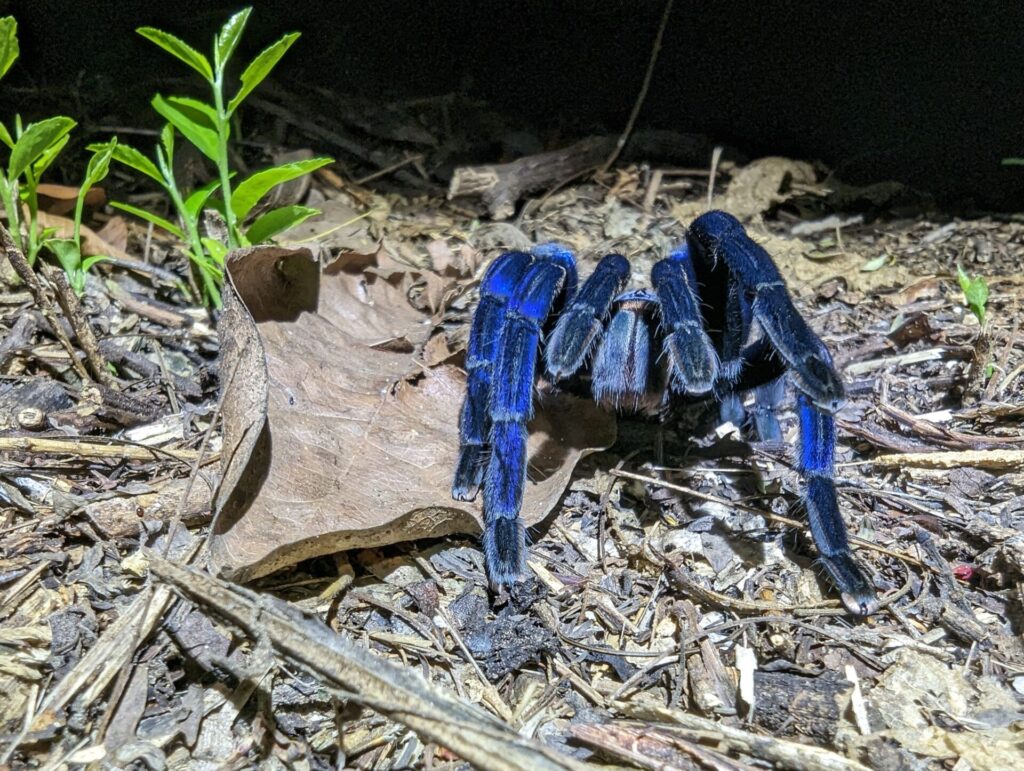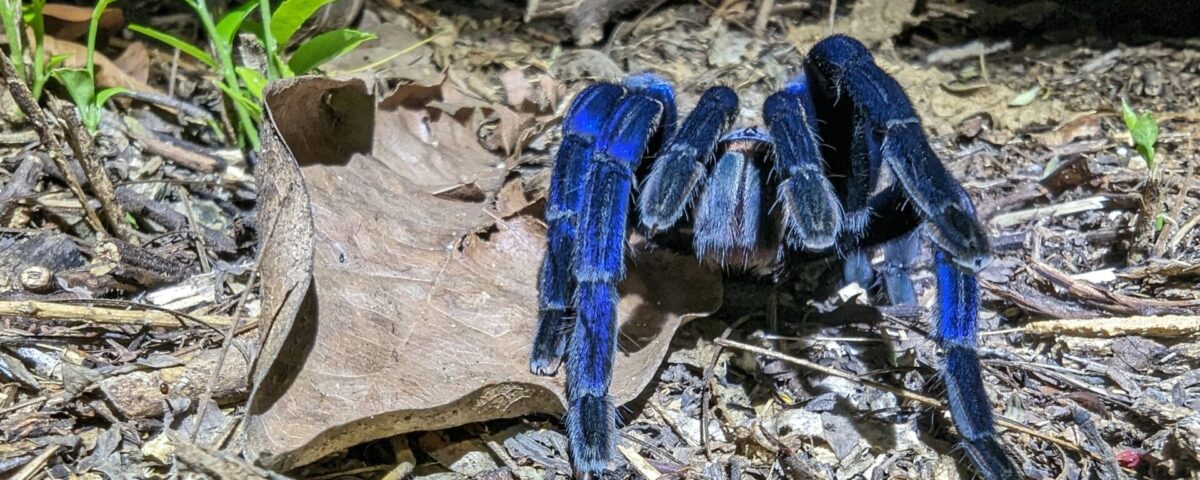
Sunset & Black Light Desert Walk
October 10, 2023
Great Ecology Welcomes Esme!
October 16, 2023
Creepy Creature Feature: Tarantulas
Author: Carter Teasdale
There are many symbols associated with the month of October, one of the most prominent being the spider. More specifically, big, hairy spiders such as tarantulas are commonly found in Halloween decorations and movies. Tarantulas (Theraphosidae) which belong in the taxonomic family of Theraphosidae, are typically found in arid, subtropical, and tropical regions on every continent apart from Antarctica. For this reason, most people are likely to encounter a tarantula at one point or another in their lifetime. While a spider the size of your hand may cause a sense of dread, it is largely unfounded. Tarantulas, although venomous, do not pose a threat to humans. Their venom is of mild potency and allergic reactions are uncommon. In addition, tarantulas are highly unlikely to bite due to their rather docile nature. They would rather flee than attack, which makes them a popular pet choice among exotic arthropod enthusiasts. Furthermore, there are no documented cases of a tarantula bite killing a human being within the last 50 years.
Tarantulas are also feared because of their somewhat menacing appearance. They have 8 legs like any spider but may look like they have 10 legs because of their pedipalps – smaller appendages at the front end of the spider which are used as feelers and to aid in feeding-. The largest species of tarantula in the world is the Goliath Bird Eater (Theraphosa blondi), which can weigh up to 6 ounces and have the second largest leg span of any spider, growing up to 12 inches across. Although some tarantulas may appear creepy or scary, there are many species that can be found in various beautiful, vibrant colors, including blue, pink, yellow, and orange among others.
Tarantulas play a large role in our ecosystem, regulating certain species of animals, while also providing a source of food for other animals. They are even beneficial to humans. Tarantulas prey on a myriad of animals that are considered pests. Their diet typically consists of cockroaches, centipedes, grasshoppers, crickets, lizards, mice, and many other animals that are unwanted in households.
If you ever come across a tarantula in the wild, or while trick-or-treating, do not be alarmed. As mentioned before, these spiders are very docile, and will not try to harm you. If they feel harassed, they may attempt to release hairs and “shoot” them into the air, and towards the perceived predator. These hairs can cause rashes and inflammation, and thus it is best to leave them alone in the wild. Like the old adage that we can take comfort in on Halloween says: they are more afraid of you than you are of them. The best way to deal with seeing a tarantula is allowing it to continue on its path while admiring it from a respectful distance.
Interested in learning more about creepy creatures? We’ll be featuring one a week the rest of this month in celebration of Halloween, and to dismiss any stigma against the animals that are beneficial to our ecosystems. Check back on our blog next week to see what creature we’re featuring next!

